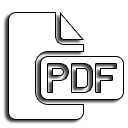A Analysis Of Physicochemical Properties, Pharmacokinetics and Toxicity Of Active Compounds In Red Ginger (Zingiber Officinale Var Rubrum Rhizoma)
DOI:
https://doi.org/10.33859/jpcs.v4i1.454Keywords:
physicochemical, pharmacokinetics, toxicity, Zingiber Officinale Var Rubrum RhizomaAbstract
Background: Red ginger (Zingiber Officinale Var Rubrum Rhizoma) contains secondary metabolites that show pharmacological activity. However, not many know that Red ginger rhizome includes a compound produced as an anti-inflammatory.
Objective: This research aims to provide an initial screening by looking at the potential of the compounds produced by red ginger rhizomes
Method: This research was carried out descriptively using ChemDraw software and then analyzed the physicochemical properties of the compounds. Next, the predictor servers, namely Lipinski and PreADMET, are used to see the pharmacokinetic characteristics. Meanwhile, to analyze the toxicity using Toxtree software.
Result: Based on the analysis, distinct physicochemical compounds are best: zingerone (period boil, period melted, a period critical temperature, and point necessary pressure) and zingiberene (Log P and gibs energy). Analysis results in Lipinski show geraniol, zingiberene, zingerone, and 1.8 cineol compounds criteria Lipinski. Besides That, pharmacokinetic data show the fourth compound has its solubility in high water. The intestinal absorption values of geraniol, zingiberene, zingerone, and 1.8 cineol are excellent. The compounds geraniol, zingiberene, zingerone, and 1.8 cineol all have good permeability to the blood-brain barrier, but of the four compounds, the compound with the best permeability is zingiberene.
Conclusion: All compounds show a level of low toxicity for using skin and no toxicity for the heart.
References
Abdullah, S. S., Putra, P. P., Antasionasti, I., Rundengan, G., Suoth, E. J., Abdullah, R. P. I., & Abdullah, F. (2021). Analisis Sifat Fisikokimia, Farmakokinetik Dan Toksikologi Pada Pericarpium Pala (Myristica Fragransa) Secara Artificial Intelligence. Chemistry Progress, 14(2), 81. https://doi.org/10.35799/cp.14.2.2021.37112
Brier, J., & lia dwi jayanti. (2020). Studi In Vitro Hubungan Logaritma Koefisien Partisi Dengan Ikatan Protein Plasma Dari Antidiabet Turunan Sulfonil Urea Sebagai Bahan Pembelajaran Mata Kuliah Farmasi Fisik. 21(1), 1–9. http://journal.um-surabaya.ac.id/index.php/JKM/article/view/2203
Damanti, E. N. (2021). Kepercayaan Masyarakat Memilih Obat Herbal Sebagai Alternatif Dalam Pengobatan. Journal of Chemical Information and Modeling, 1(1), 1–7.
Firmansyah, J. (2018). Eksplanasi Ilmiah Air Mendidih Dalam Suhu Ruang. Jurnal Filsafat Indonesia, 1(2), 75. https://doi.org/10.23887/jfi.v1i2.13993
Masniah, Rezi, J., & Faisal, A. P. (2021). Isolasi Senyawa Aktif Dan Uji Aktivitas Ekstrak Jahe Merah ( Zingiber Officinale ) Sebagai Isolation of Active Compounds and Activity Test of Red Ginger Extract ( Zingiber Officinale ) As. Jurnal Riset Kefarmasian Indonesia, 3(2), 77–91.
Miftahul Reski Putra Nasjum. (2020). Studi In Silico Senyawa Dalam Ekstrak Etanol 96% Daun Krisan (Chrysanthemum cinerariifolium (Trev.)) Terhadap Reseptor Estrogen Alfa (5W9C). Kaos GL Dergisi, 8(75), 147–154. https://doi.org/10.1016/j.jnc.2020.125798%0Ahttps://doi.org/10.1016/j.smr.2020.02.002%0Ahttp://www.ncbi.nlm.nih.gov/pubmed/810049%0Ahttp://doi.wiley.com/10.1002/anie.197505391%0Ahttp://www.sciencedirect.com/science/article/pii/B9780857090409500205%0Ahttp:
Muafiah, A. F. (2019). Zingiber officinale Rosc. Αγαη, 8(5), 55.
Nursamsiar, Toding, A. T., & Awaluddin, A. (2016). Studi In Silico Senyawa Turunan Analog Kalkon Dan Pirimidin Sebagai Antiinflamasi: Prediksi Absorpsi, Distribusi, dan Toksisitas. Pharmacy, 13(01), 92–100.
Parwata, I. M. O. A. (2016). Obat Tradisional. Jurnal Keperawatan Universitas Jambi, 218799. https://simdos.unud.ac.id/uploads/file_pendidikan_1_dir/a6a48203e23370286113d07440fa07ef.pdf
Putra, P. P., Fauzana, A., & Lucida, H. (2020). Analisis Sifat Fisika-Kimia, Potensi Target dan Toksikologi Senyawa Isolat Murni dari Bahan Alam dengan Metode In Silico. Indonesian Journal of Pharmaceutical Science and Technology Journal Homepage, 7(3), 107–117. http://jurnal.unpad.ac.id/ijpst/UNPAD
Redi Aryanta, I. W. (2019). Manfaat Jahe Untuk Kesehatan. Widya Kesehatan, 1(2), 39–43. https://doi.org/10.32795/widyakesehatan.v1i2.463
Susanti, N. (2017). Bab iv farmakologi umum. Kementrian Pendidikan Dan Kebudayaan. https://sertifikasiguru.uad.ac.id/wp-content/uploads/2016/10/BAB-IV-FARMAKOLOGI-UMUM-1.pdf
Sutoyo. (2015). Keanekaragaman Hayati Indonesia Suatu Tinjauan : Masalah dan Pemecahannya Sutoyo. 10, 101–106.
Thahara, C. A., Rizarullah*, R., Atika, R. A., & Wahab, A. (2022). Potensi Pendekatan in Silico Sebagai Penghambat Aktivitas Protein Protease Utama SARS-CoV-2 dari Tiga Senyawa Tanaman Obat Jahe Merah. Jurnal IPA & Pembelajaran IPA, 6(3), 207–218. https://doi.org/10.24815/jipi.v6i3.24914
Verawati, Martinus, B. ., & Ramadhani, R. (2021). Profil Kimia Oleoresin Rimpang Jahe Merah (Zingiber OfficinaleVar Rubrum) Kabupaten Dharmasraya Menggunakan GC-MS. JurnalKatalisator, 6(1), 126–135. http://publikasi.lldikti10.id/index.php/katalisator/article/view/258
Yayat Rahmat Hidayat, Perguruan, P., & Tinggi, T. (1967). Jahe Merah. Angewandte Chemie International Edition, 6(11), 951–952., 4(March), 763–773.
Downloads
Published
How to Cite
Issue
Section
License
Copyright (c) 2023 Journal Pharmaceutical Care and Sciences

This work is licensed under a Creative Commons Attribution 4.0 International License.















